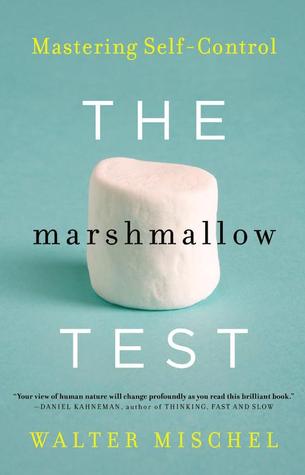More on this book
Community
Kindle Notes & Highlights
Read between
January 27 - February 5, 2020
In short, we are less likely to delay gratification when we feel sad or bad. Compared with happier people, those who are chronically prone to negative emotions and depression also tend to prefer immediate but less desirable rewards over delayed, more valued rewards.
The power is not in the stimulus, however, but in how it is mentally appraised: if you change how you think about it, its impact on what you feel and do changes.
The amygdala rapidly mobilizes the body for action. It does not pause to think and reflect or worry about long-term consequences.
To reiterate, the two systems—one hot to deal with immediate rewards and threats, the other cool to deal with delayed consequences—act together: as one becomes more active, the other becomes less active. The challenge is to know when it’s best to let the hot system guide your course, and when (and how) to get the cool system to wake up.
“Human behavior is often governed by a competition between lower level, automatic processes that may reflect evolutionary adaptations to particular environments, and the more recently evolved, uniquely human capacity for abstract, domain-general reasoning and future planning.… The idiosyncrasies of human preferences seem to reflect a competition between the impetuous limbic grasshopper and the provident prefrontal ant within each of us.”
We may all be both grasshopper and ant, but whether the prefrontal ant or the limbic grasshopper in us emerges at any given time depends on the temptation in the particular situation and how we appraise and think about it. As Oscar Wilde famously noted, “I can resist everything except temptation.”
optimism is a blessing to be wished for, as long as it reasonably connects to reality.
When optimists fail, they think they can succeed the next time if they change their behavior or the situation appropriately. They use a rejection experience, failed job application, bad investment, or poor test result to figure out what they need to do to improve their chances on the next attempt. They then craft alternative plans and find other ways to reach their important goals, or seek needed advice until they can develop a better strategy.
when the future becomes the present, they find themselves facing a trip they don’t want to take, an event they don’t want to attend, a paper they don’t want to write, or a family visit they don’t want to make.
low-self-distance people coped adaptively in conflicts, as long as their partners did not become negative and hostile toward them. But if their partners did become hostile, they fully reciprocated, sharply escalating the hostility.
When we speak about rejection experiences in terms of physical pain, it is not just a metaphor—the broken heart and emotional pain really do hurt in a physical way.
In response to the social exclusion, those who had been on the painkiller for three weeks had significantly less neural activity in the pain areas of their brains.
“High RS” people are extremely anxious about rejection in close relationships, anticipate abandonment, and often, through their own behavior, provoke the very rejection that they fear.
unless kept very carefully in check, optimism, self-affirmation, and the related positive qualities generate a bias that leads to overconfidence and potentially dangerous decision making and risk taking—across virtually every profession and business examined closely.
The benefits, however, may not last. The researchers induced heightened illusory control in the low self-control participants by having them succeed in predicting coin flips, or getting them to recall times when they had made good decisions and had been in high-control situations. Feeling more confident, these participants quickly lost their initial advantage: they started to resemble the high self-controllers—and to make the exact same poor choices (and lose money) as a result.
Might this be why experimenting and not being afraid to fail is so important? Failure keeps us grounded in reality
only about 35 percent of such businesses in the United States survive for five years.
Thomas Astebro, a researcher who studied the fates of almost 1,100 new inventions submitted by eager innovators, found that less than 10 percent of them reached the market, and of those that did, 60 percent got negative returns. Half of the inventors withdrew after receiving objective reviews predicting that their inventions were sure to fail, but 47 percent of the remaining half persisted, doubling their initial losses before quitting. Six out of the roughly 1,100 inventions scored big, however: they yielded returns exceeding 1,400 percent.
like all skills, self-control skill is exercised only when we are motivated to use it. The skill is stable, but if the motivation changes, so does the behavior.
Behavior is context-dependent. Highly developed self-control skills may be exercised in some situations and with some temptations, but not in others, as the stories of fallen public figures regularly remind us.
Kaufer and Francis point out, “Environments can be as deterministic as we once believed only genes could be, and… the genome can be as malleable as we once believed only environments could be.”
at the end of that causal chain, it is the individual who is the agent of the action and decides when to ring the bell.


